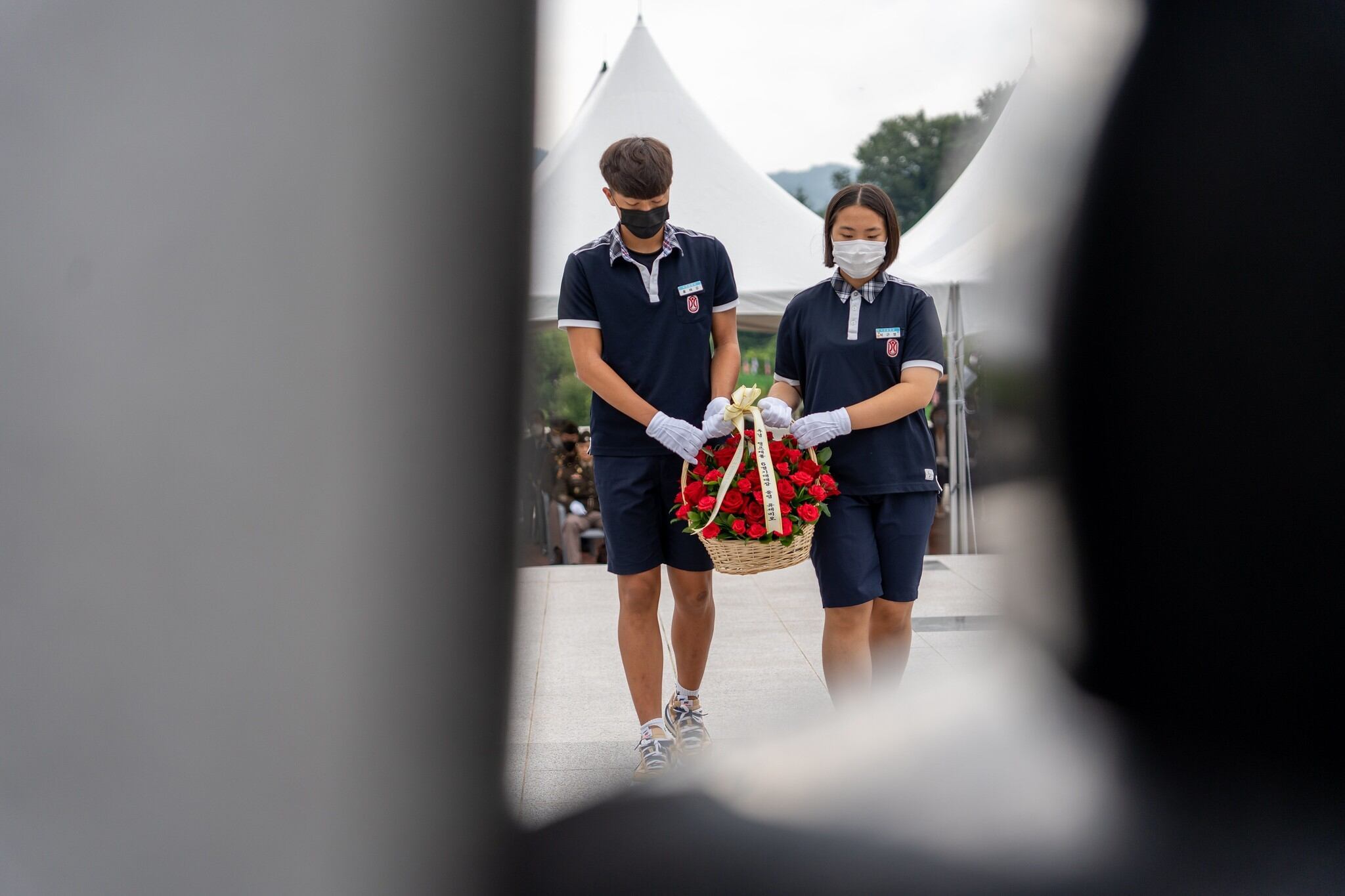In a wreath-laying ceremony held near Camp Carroll in South Korea Aug. 17, U.S. and Republic of Korea troops and civilian personnel gathered to pay their respect to U.S. Army prisoners of war who were massacred by North Korean forces at Hill 303 more than 70 years ago.
After being captured during the Battle of Pusan Perimeter, 46 American soldiers were marched to a ravine on Aug. 17, 1950, and killed. Only five soldiers managed to survive the ordeal.
“The ROK-U.S. alliance is among the strongest of partnerships in the world because of the selfless service, sacrifice and courage of those who stood on this very sacred ground,” said Army Lt. Col. Daniel S. Eusebio, 6th Ordnance Battalion commander, during the ceremony.
“The fact that our two countries are gathered here today in friendship and partnership, solidifies that the deaths of these forty-one heroes were not in vain.”
An official monument in honor of the lives lost at Hill 303 was first raised in 2003, and has since been joined by a separate memorial park and monument constructed by Chilgok County.

The incident was just one of many war crimes committed during the Korean War.
North Korean forces were also behind crimes such as the Bloody Gulch Massacre and the Champlain-Medic Massacre, the latter of which saw the slaughter of more than 30 unarmed and wounded U.S. troops in 1950 following the Battle of Taejon.
However, U.S. troops were also known to have committed atrocities against both North Korean forces and civilians alike.
Historian Bruce Cumings has previously called the Korean War an “appallingly dirty” civil war. When referencing war crimes committed during the conflict, Cumings noted that South Korea, “our ostensibly democratic ally, was the worst offender, contrary to the American image of the North Koreans as fiendish terrorists.”
Then there was the indiscriminate bombings by U.S. forces that have scarred the North to this day.
Air Force Gen. Curtis LeMay, head of the Strategic Air Command during the Korean War, estimated in an interview with the Office of Air Force History in 1984 that “we killed off — what — twenty percent of the population of Korea as direct casualties of war, or from starvation and exposure.”
According to Cumings, the U.S. dropped around 635,000 tons of bombs and 32,557 tons of napalm over the three-year war, which is more than was used in the entire Pacific region of conflict during the Second World War.
Over the course of the Korean War, the U.S. sent almost 2 million troops. Thirty-seven thousand were listed as killed or missing and more than 90,000 were wounded.
Rachel is a Marine Corps veteran and a master's candidate at New York University's Business & Economic Reporting program.





